In recent years, AI has been widely used in many fields, including healthcare. Today, we will use UPDF's AI assistant as an example to demonstrate how is AI used in the healthcare field.
UPDF AI is an assistant specifically designed to facilitate healthcare professionals, students, and patients get valuable insights related to their medical queries. It can help analyze medical reports, answer general/complex medical questions, summarize/translate medical books, and much more.
Part 1. How to Use AI to Analyze Medical Reports?
Medical reports often include terminology and values that are not understandable to patients. Although reports now give the test result values with reference values to compare, we are often confused about what the current test values mean.
For example, if you were tested for cholesterol levels, you might see terms like LDL, HDL, and triglycerides along with their corresponding values. If the values are not within the normal range, you may want to know more about them.
That's what you can grasp with an AI-powered chatbot like UPDF's AI assistant. The UPDF AI feature can analyze your medical reports and then allows you to use its chat box to clarify all your queries. Interested users can download it and try it out for free.
Windows • macOS • iOS • Android 100% secure
To better understand, consider the below example of a sample HbA1c and lipid profile test report.
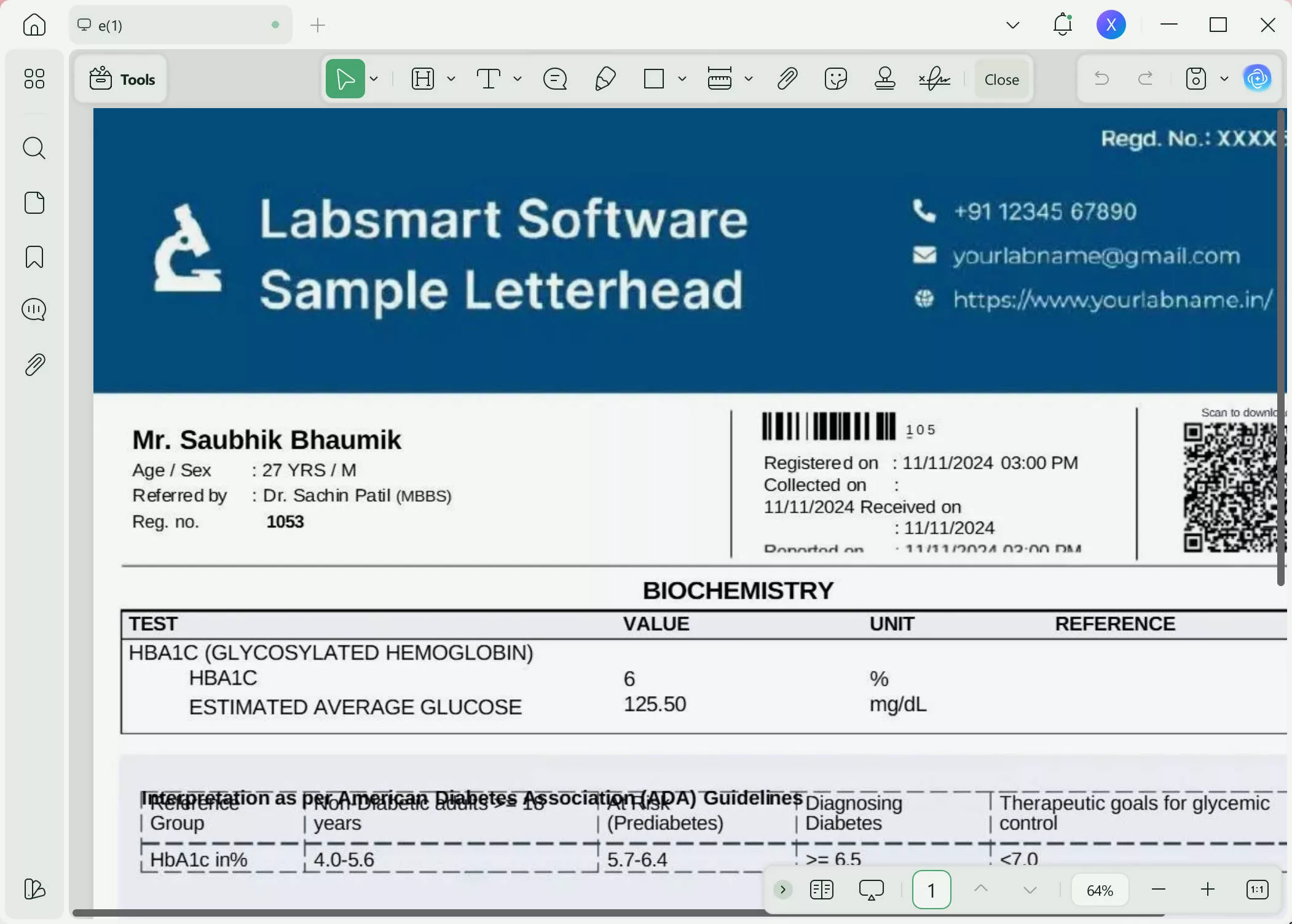
As you can see, the test results show alarming values. So, let's now use the UPDF AI feature and see how is AI being used in healthcare for analyzing medical reports.
There is a dedicated "Ask PDF" mode within the AI that can analyze medical reports and address your queries. After analyzing, it will automatically provide a quick summary of the whole report.
Afterward, below are a few example prompts you can use with the UPDF AI feature to get a deeper analysis:
Prompt #1: What does HbA1c mean, and is 6.2% concerning?
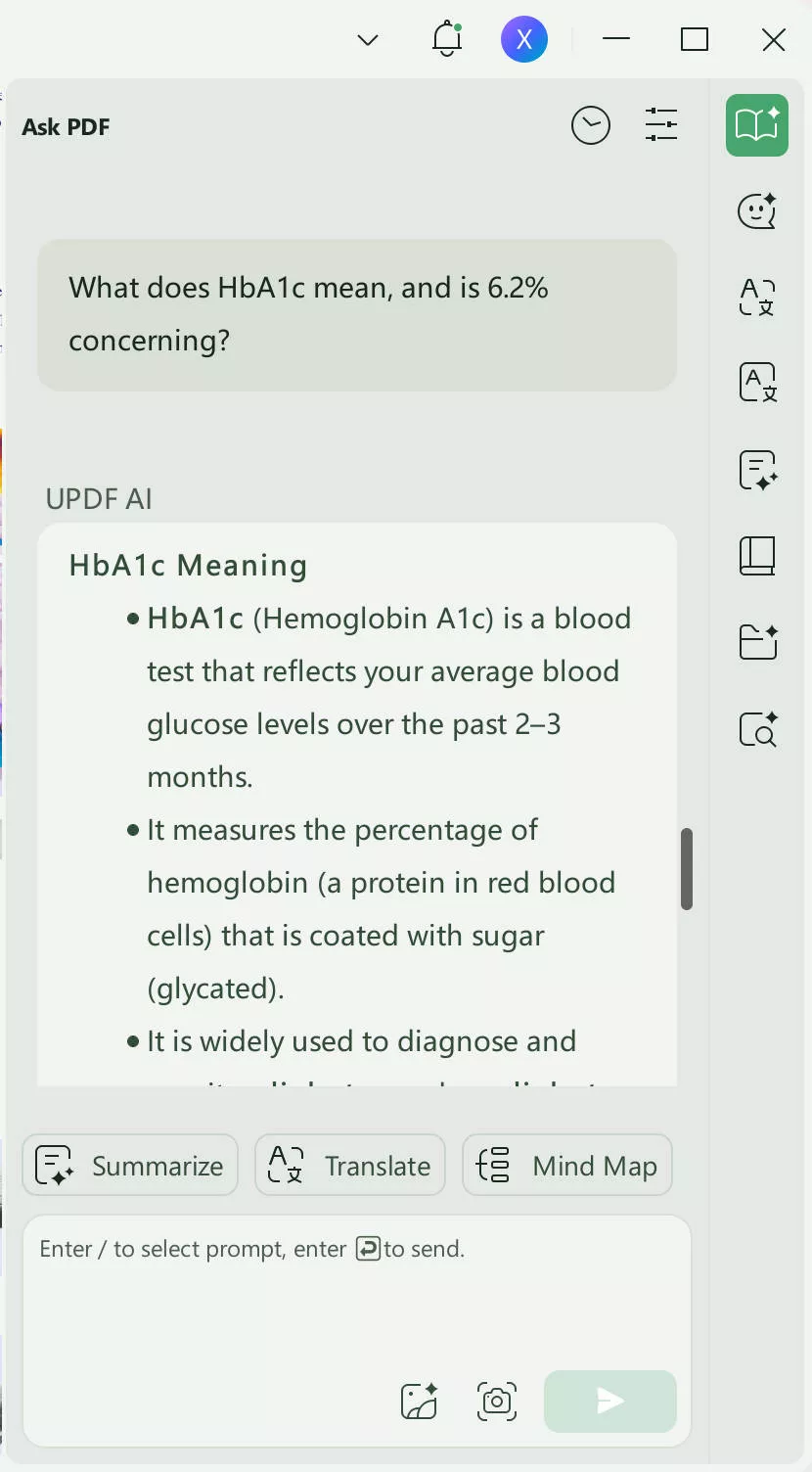
Prompt #2: What are the potential reasons why the serum total cholesterol is at a high level of 271 md/dL?
Prompt #3: Looking at this medical report, what should be my next steps?
Bonus Tip
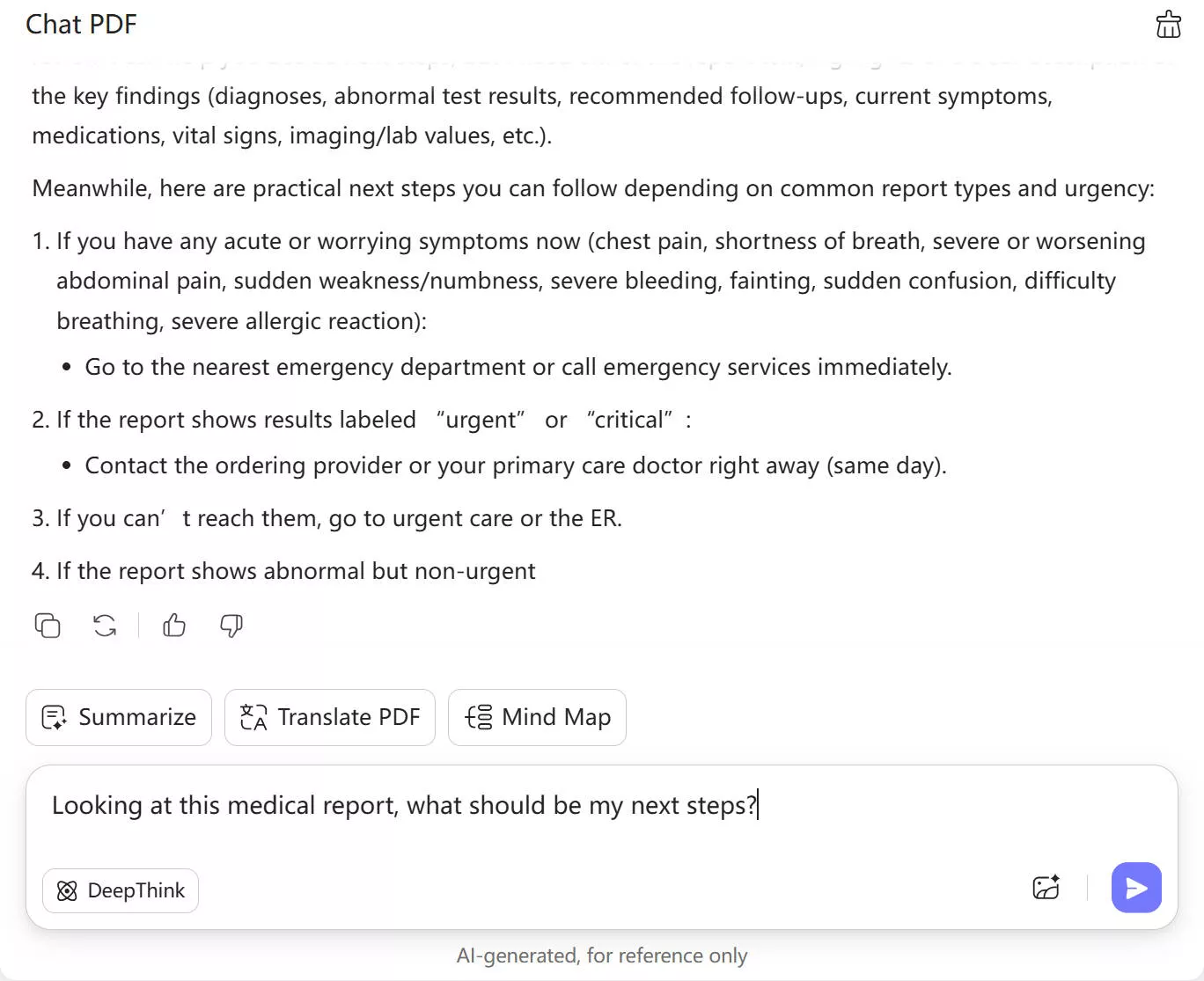
Prompt #4: Summarize the findings of my latest blood test report.
Part 2. How to Use AI for Basic Medical Suggestions?
Other than analyzing medical reports, you may want assistance with basic medical suggestions. For example, you are a doctor and want to create supportive responses to address patient concerns. Similarly, you can be a patient and want to clarify doubts about your medical condition, such as symptoms, treatment, precautions, etc.
UPDF's AI assistant comes with a dedicated "Chat" mode where you can have human-like back-and-forth conversations and get basic medical suggestions. For instance, you can ask for symptoms and then carry out follow-up conversations.
Let's now learn how is generative AI used in healthcare to answer medical-related questions. For that, go to the UPDF.ai website or enter the "Chat" mode in the UPDF desktop app and use the below prompts:
Preliminary Analysis of Etiology
Prompt #1: What could be the underlying causes of a persistent cough lasting more than three weeks? Create 3 explanations, each one within the 100-word range.
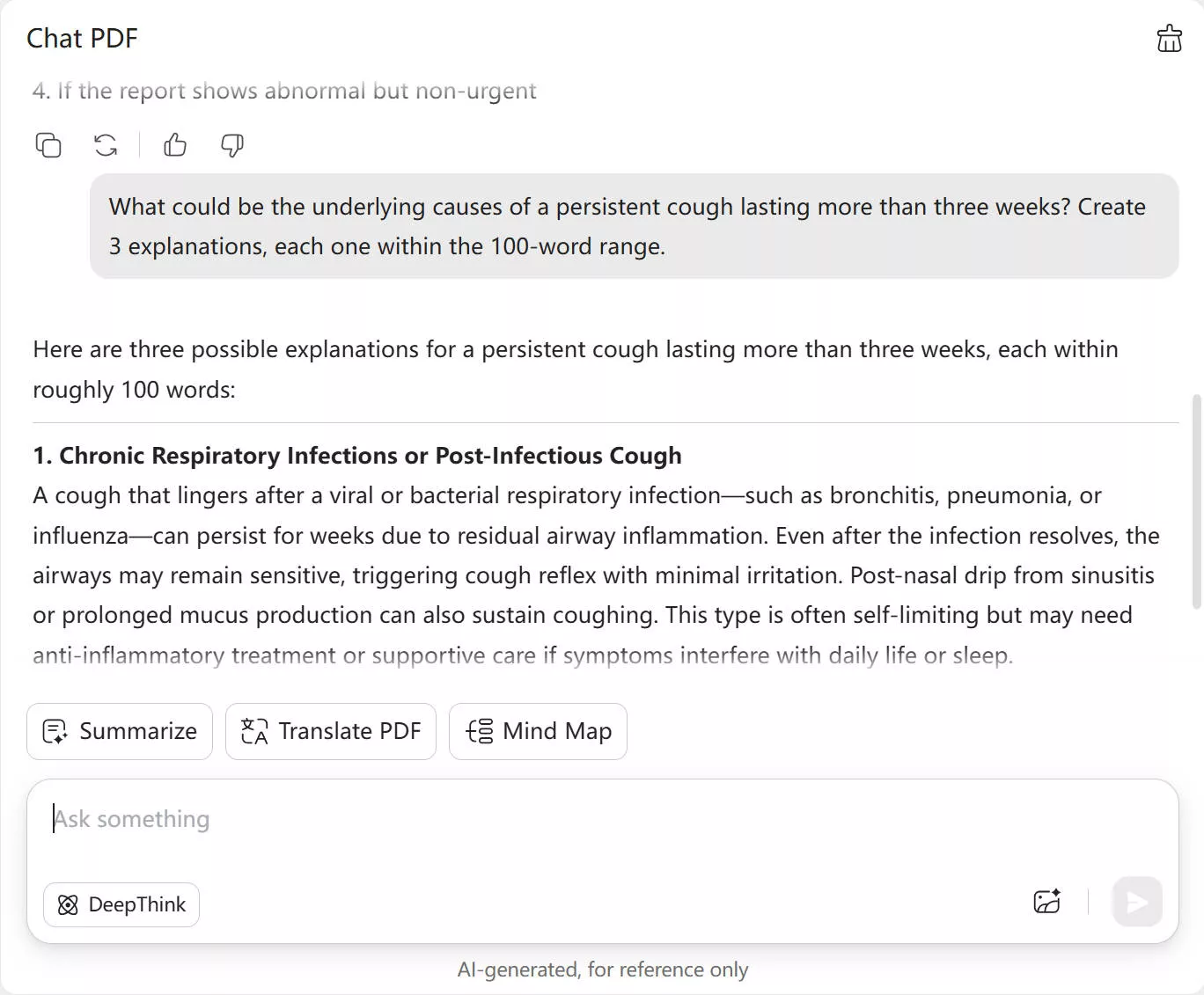
Prompt #2: I am 25 years old, and I am facing persistent joint pain. What are the common causes of it?
Prompt #3: An 18-year-old male presents with chronic abdominal pain that has been ongoing for the past six months. The pain is diffuse, occurs mainly after meals, and is sometimes associated with bloating and diarrhea. He reports no significant weight loss or changes in appetite. What are the potential causes of his abdominal pain, and what preliminary investigations should be considered?
Prompt #4: A 30-year-old female with intermittent chest pain radiating to her left arm and jaw, mainly during exertion, has a family history of cardiovascular diseases. What are the possible etiologies, and what initial tests should be performed?
Suggestions for Recovery
Prompt #1: I recently sprained my ankle and have been experiencing swelling and pain. What are some effective home treatments and exercises I can do to speed up my recovery?
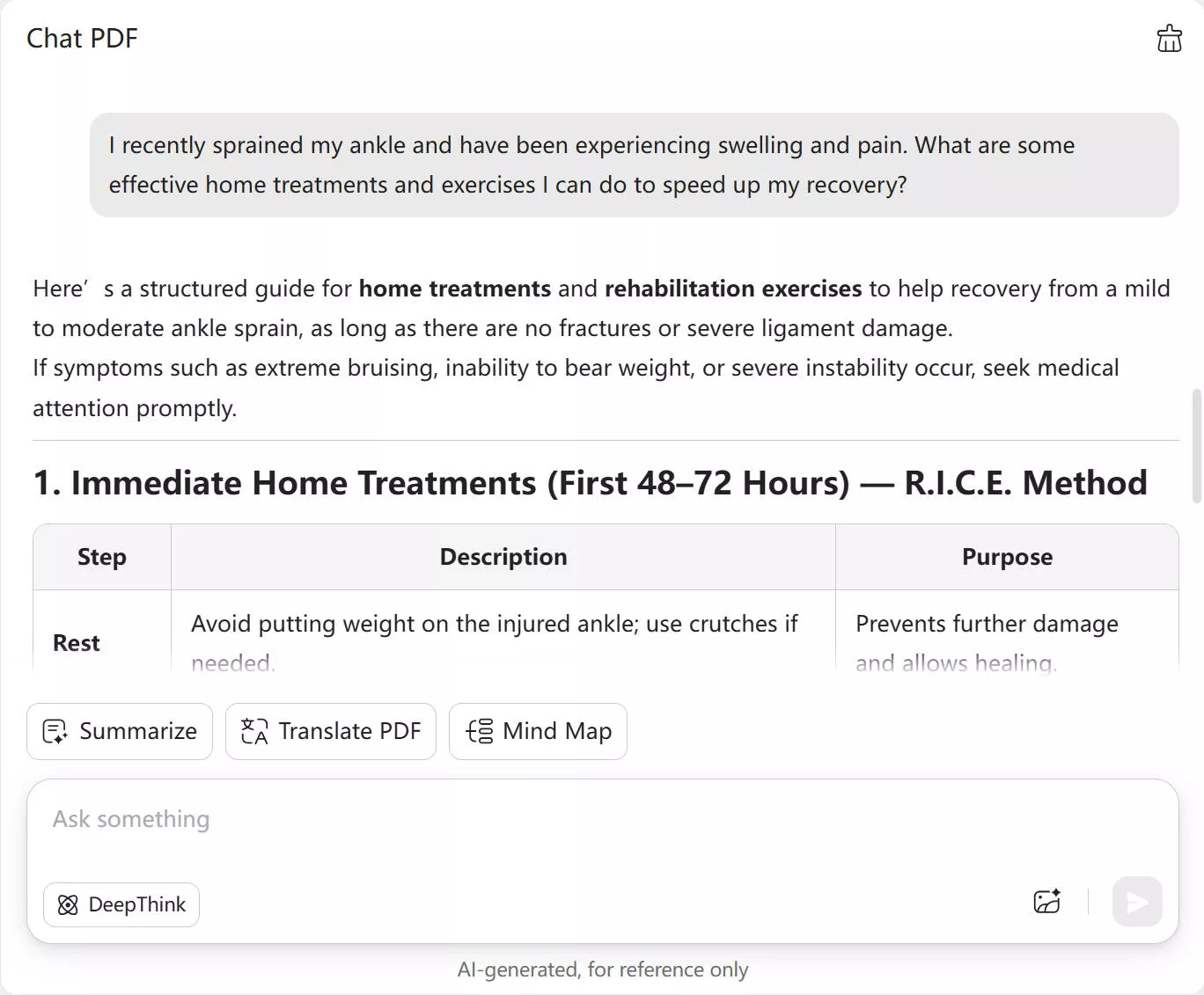
Prompt #2: A 50-year-old patient with a recent diagnosis of Type 2 diabetes is struggling to manage their blood sugar levels. What lifestyle changes and dietary adjustments should be recommended to aid in their recovery and management of the condition?
Prompt #3: A patient is reluctant to proceed with a suggested medical procedure for severe arthritis. Write 2 responses addressing their concerns and providing details about the procedure. Each response should be within 150 words.
Prompt #4: A young adult patient presents with severe anxiety and stress-related symptoms. What strategies and therapeutic approaches should be suggested to help them recover and improve their mental health?
Answering Health Inquiries
Prompt #1: A patient is worried about the side effects of their prescribed medication for hypertension. Write 3 responses that address their concerns and provide reassurance. Make sure every response is within 150 words.
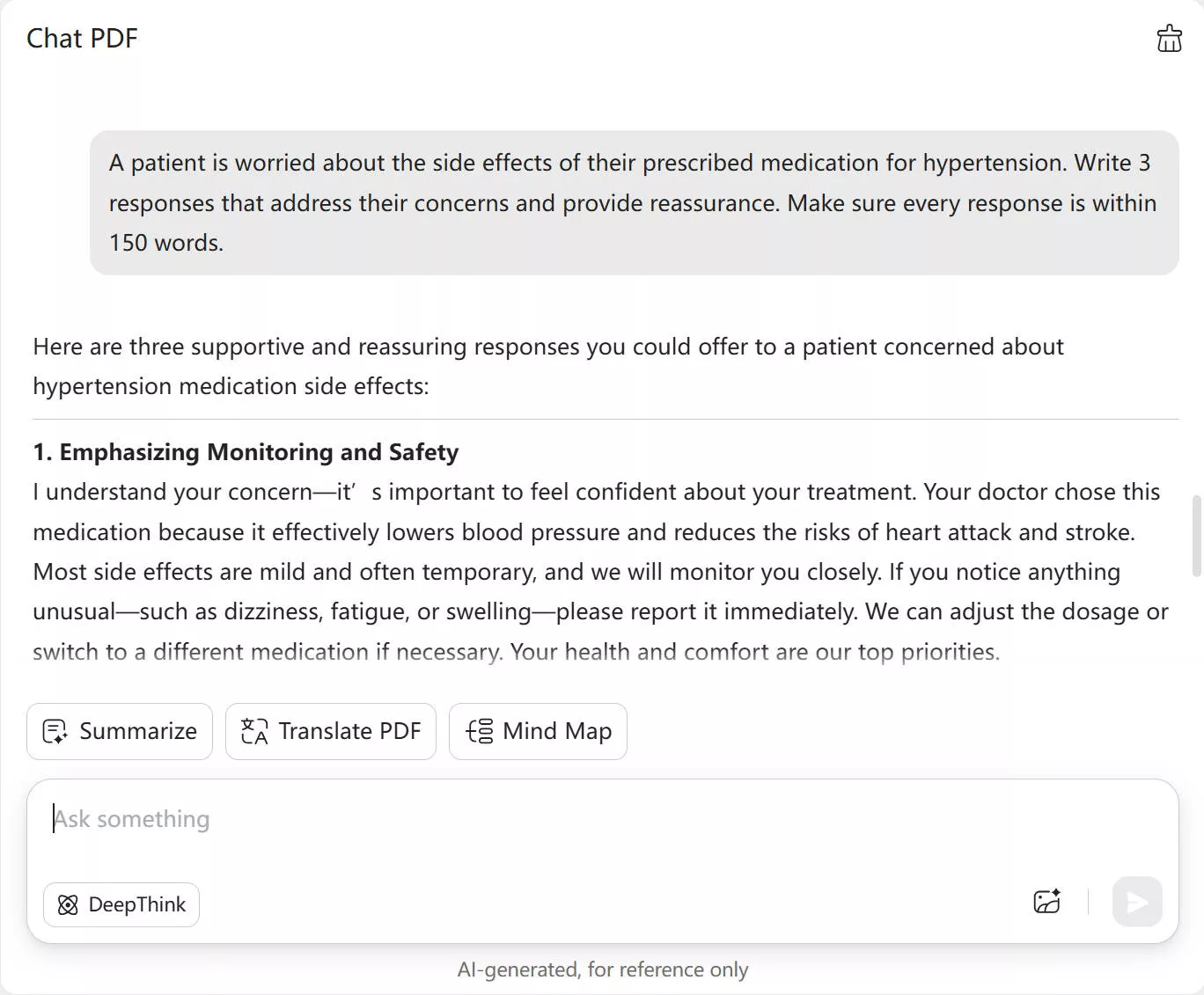
Prompt #2: I've recently been diagnosed with high cholesterol. Can you explain what dietary changes I should make to help manage my cholesterol levels?
Prompt #3: I'm experiencing frequent migraines and want to know what lifestyle modifications or home remedies can help reduce their frequency and intensity.
Prompt #4: A young adult patient is inquiring about the benefits of a plant-based diet. What comprehensive advice can be given regarding nutritional balance and potential health benefits of transitioning to a plant-based diet?
Understanding Symptoms
Prompt #1: My child has developed a rash on their arms and legs. Could you advise on possible causes and whether this requires immediate medical attention?
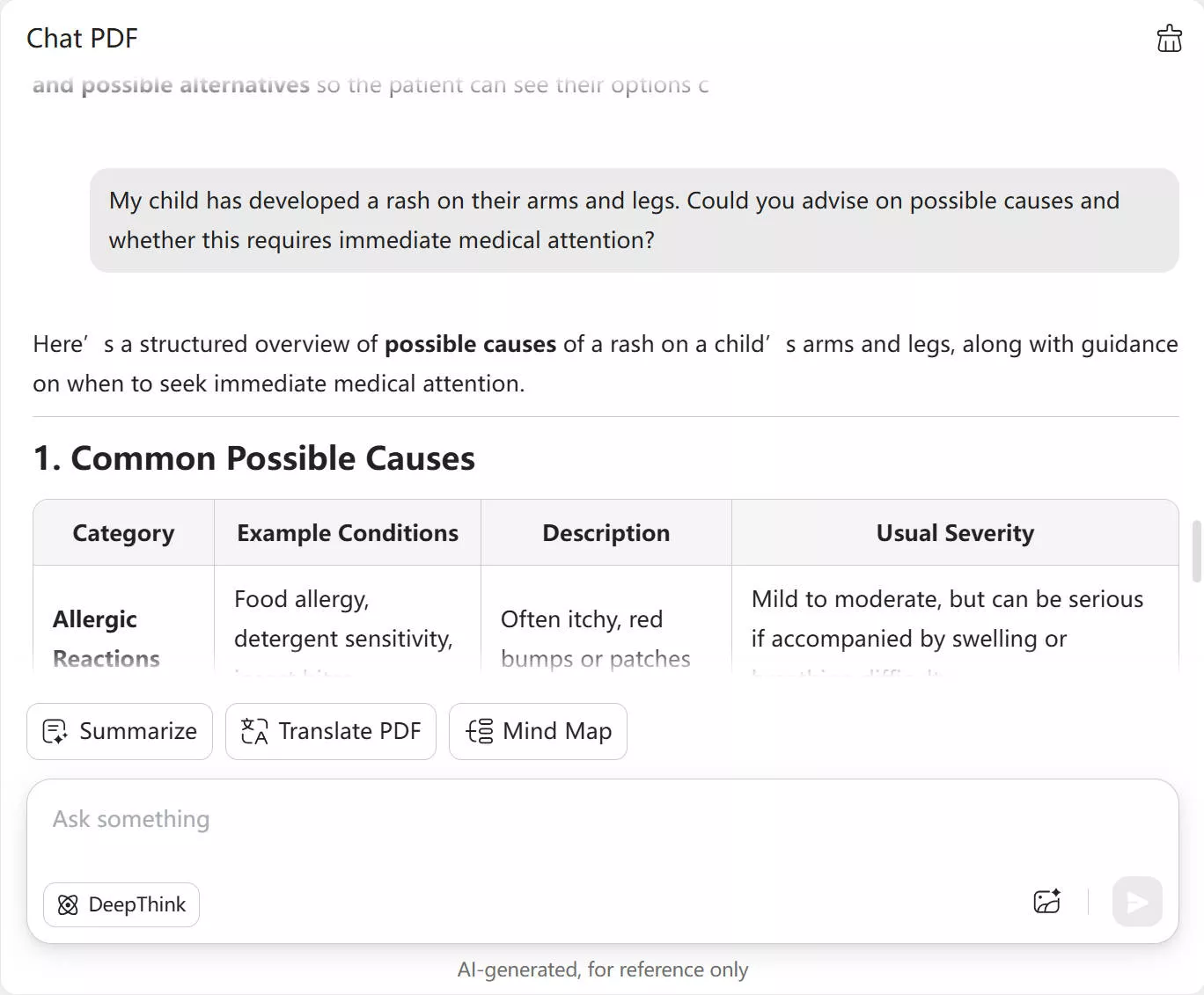
Prompt #2: I've been feeling fatigued and have occasional headaches. Can you help me understand what these symptoms might indicate and what steps I should take next?
Prompt #3: A patient describes symptoms of shortness of breath and chest tightness. Outline how you would assess these symptoms and determine the appropriate next steps for diagnosis and treatment.
Part 3. How to Use AI to Read and Understand Medical Books?
Teachers, students, and researchers can also leverage AI to read and understand medical books. With UPDF's AI assistant, you can:
- Summarize pages, chapters, or specific sections of the book.
- Translate pages or specific paragraphs of the book.
- Get explanations of complex phrases/concepts in the book.
- Get recommendations related to medical books.
- And much more.
So, let's discuss a few example prompts to see how can AI help healthcare when it comes to reading and understanding medical books:
Translate Foreign Medical Books
UPDF AI feature allows you to translate foreign medical books in three ways, as follows:
Way #1: Select and Translate Text Directly from the Book
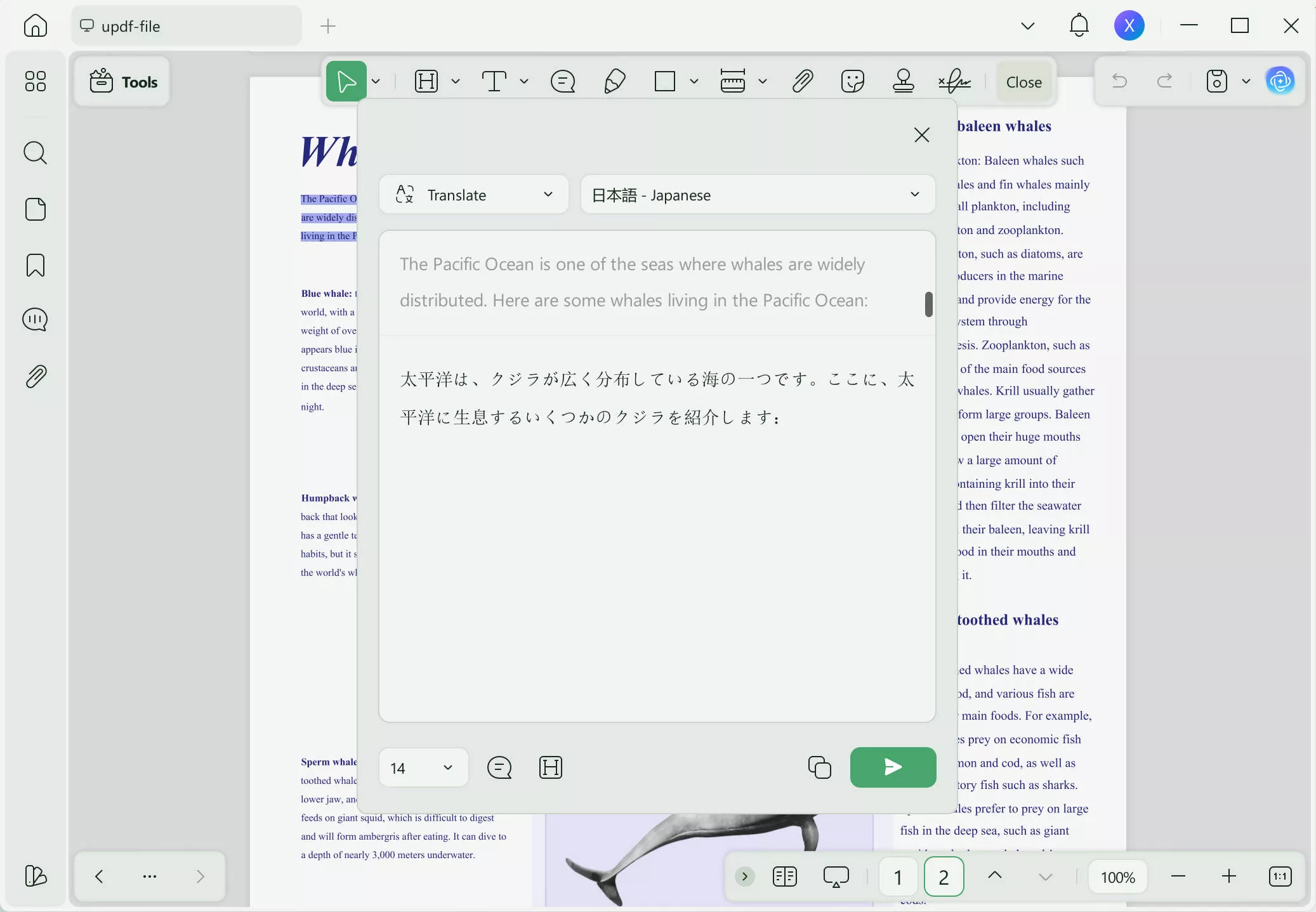
Book source: Forensic medicine and toxicology by Krishan vij
Way #2: Use Quick Prompt to Translate Single or Multiple Pages
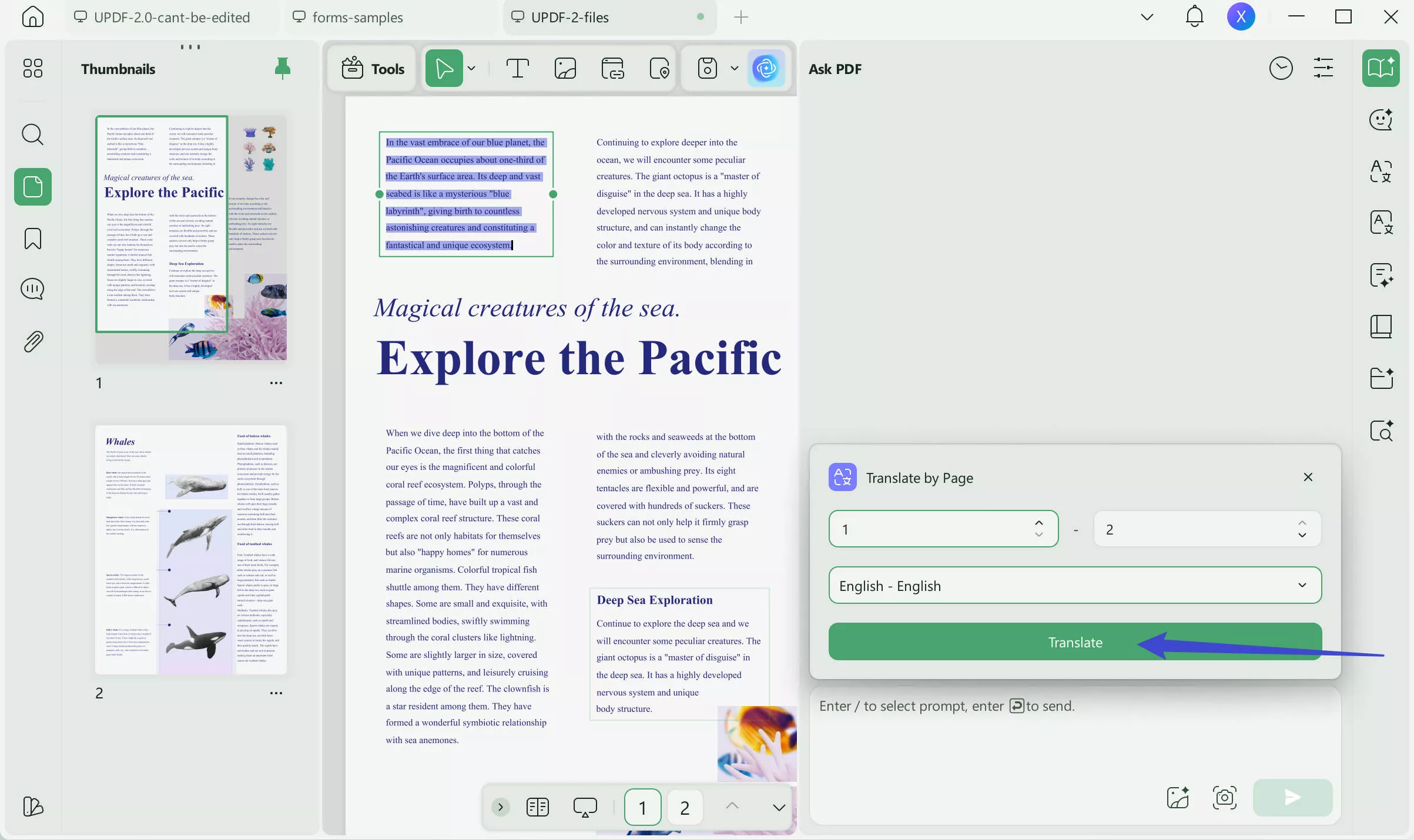
Way #3: Use Prompts to Translate Copied Text
Prompt #1: Translate this text into French: [Paste Text]
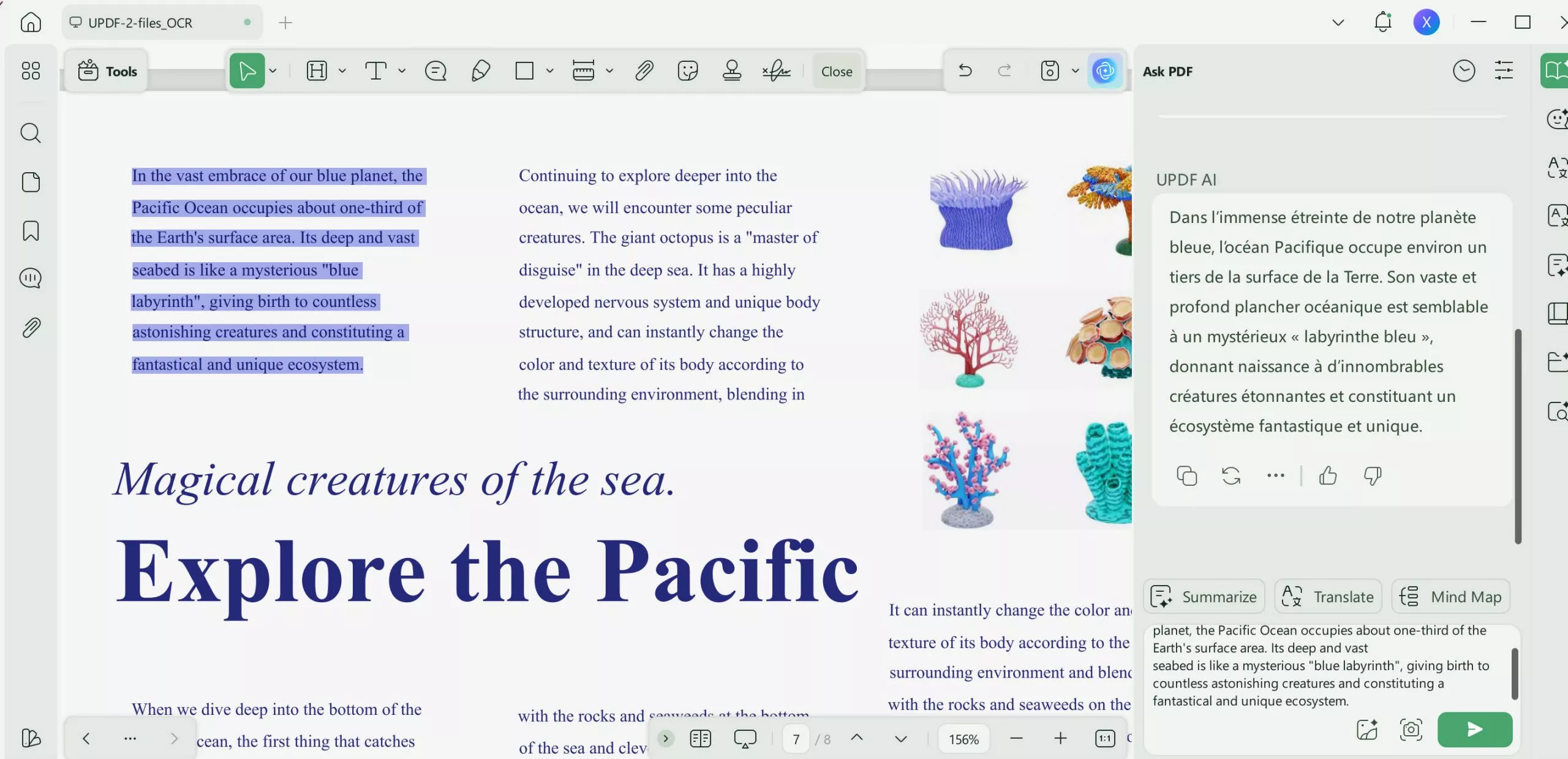
Explain Medical Terms
UPDF's AI assistant helps you get an explanation of complex medical terms in two ways:
Way #1: Select and Explain Terms Directly from the Book
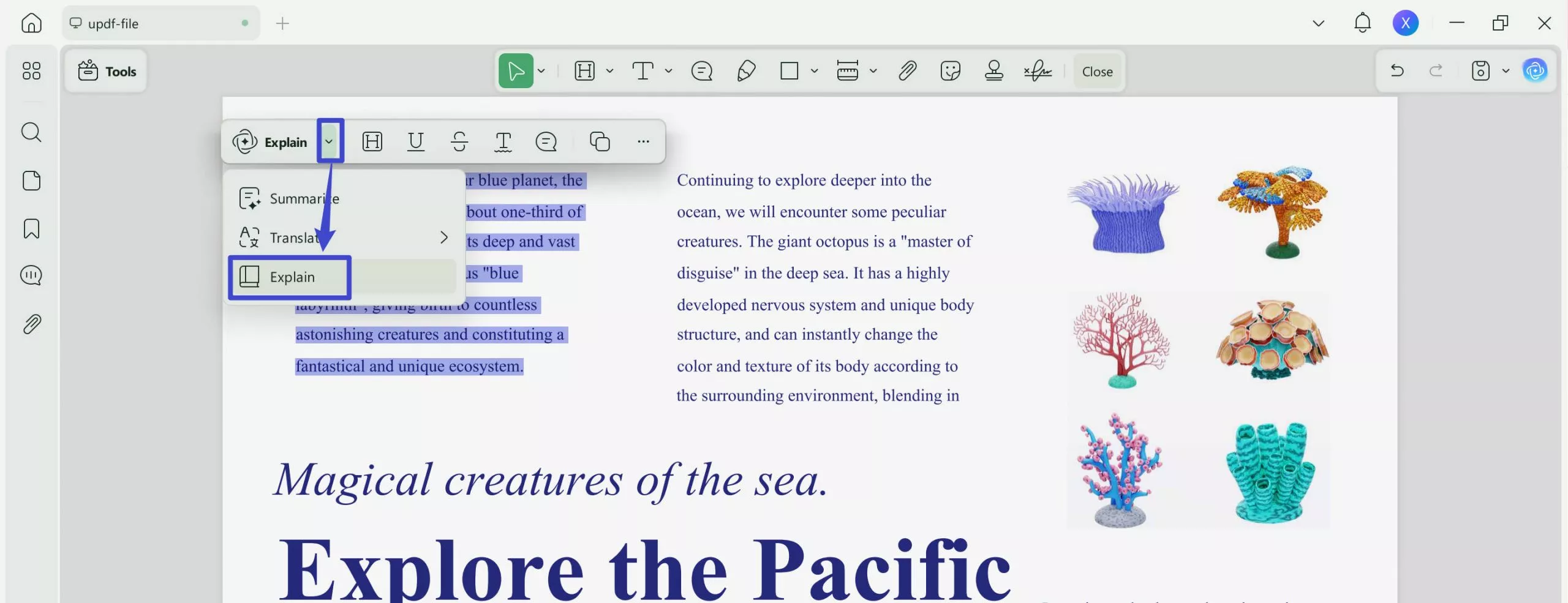
Way #2: Use Prompts to Get Explanations of Medical Terms
Prompt #1: What does laryngeal spasm really mean? Explain in simple words.
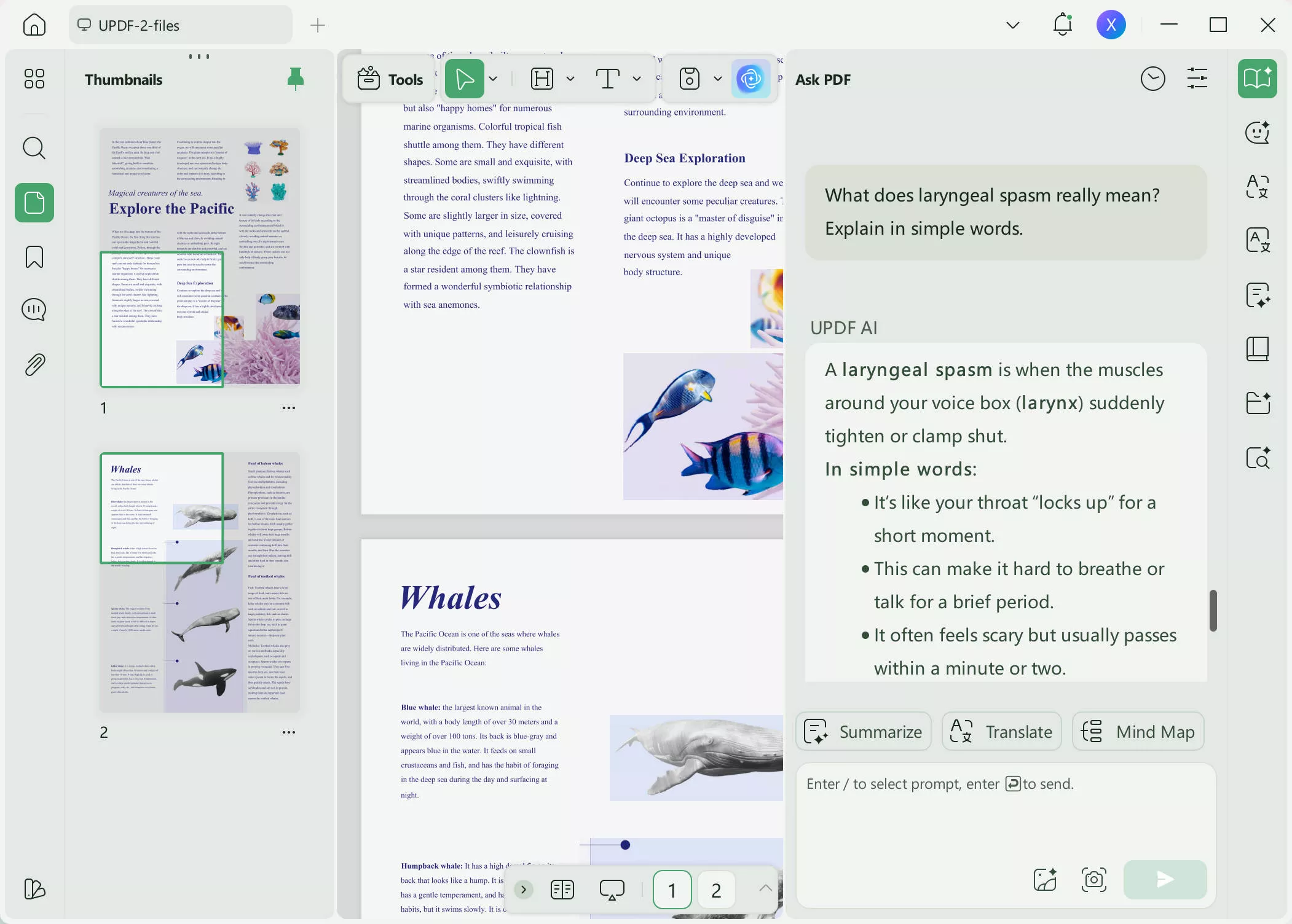
Prompt #2: Why is it that death in freshwater takes 4–5 minutes, whereas, in seawater, it takes 8–12 minutes?
Summarize Medical Books
Just like translation, the UPDF AI feature allows you to summarize medical books in three ways, as follows:
Way #1: Select and Summarize Paragraphs Directly from the Book
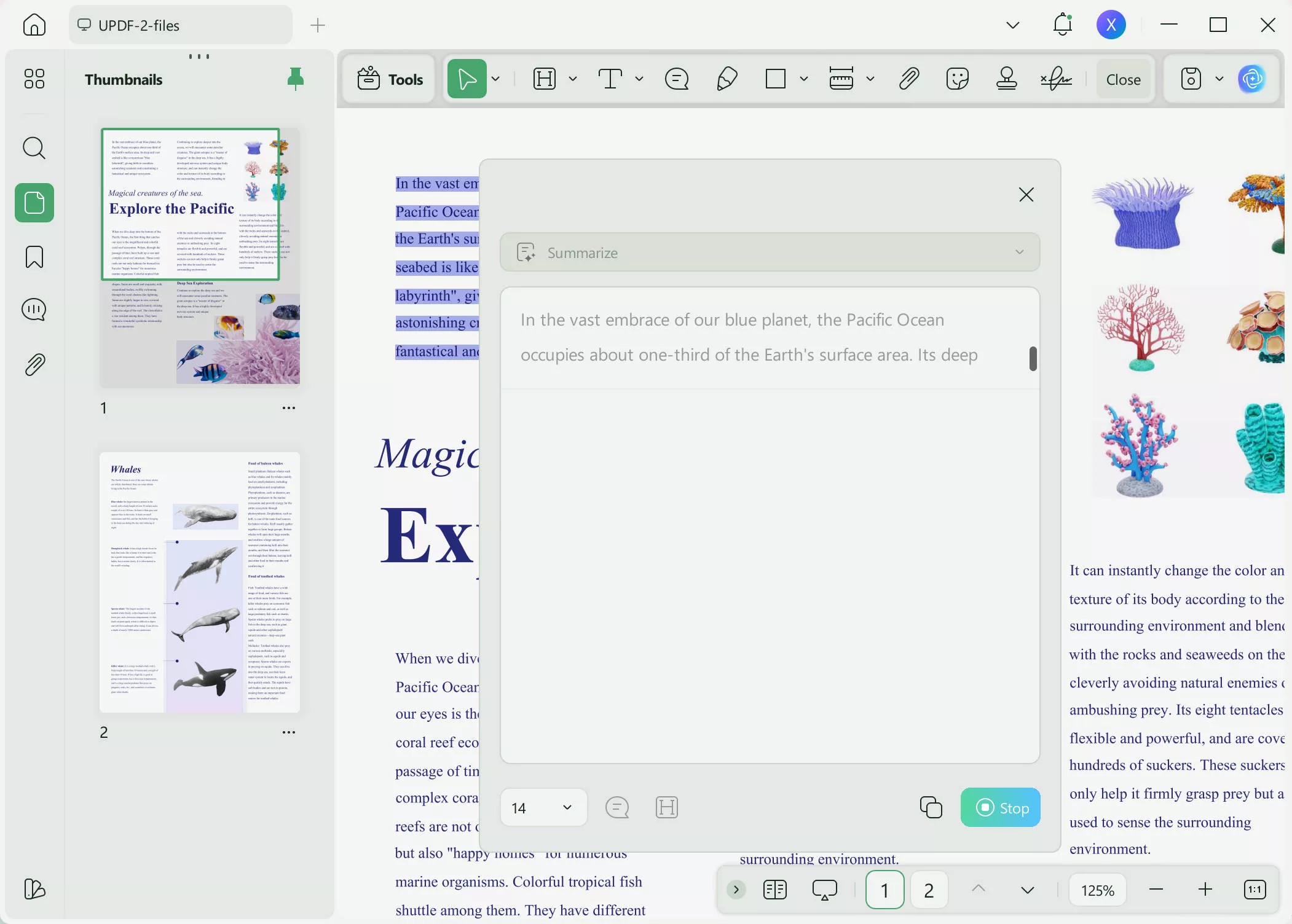
Way #2: Use Quick Prompt to Summarize Single or Multiple Pages
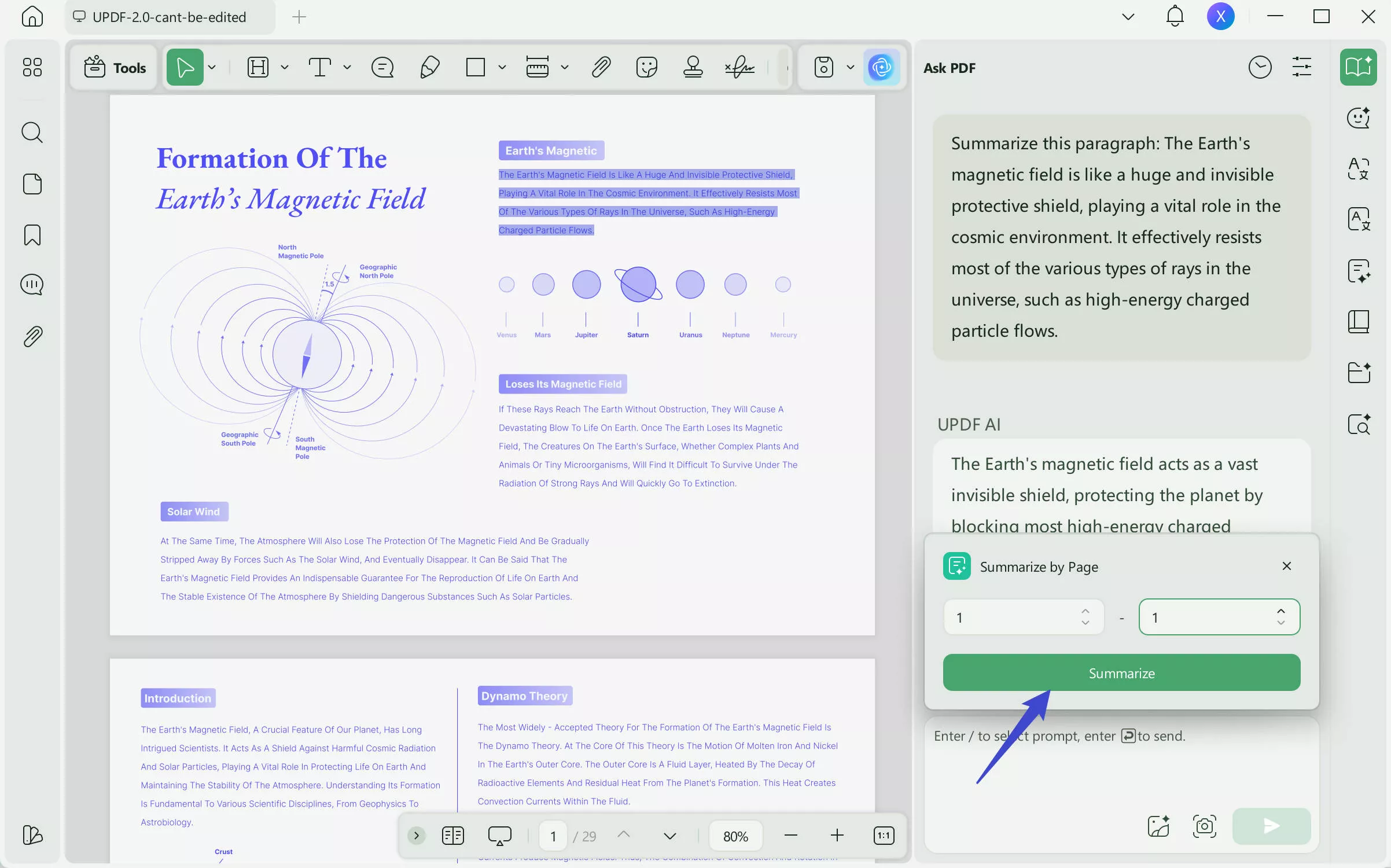
Way #3: Use Prompts to Summarize the Entire Book with customized outputs
Prompt #1: Summarize the entire book in 500 words.
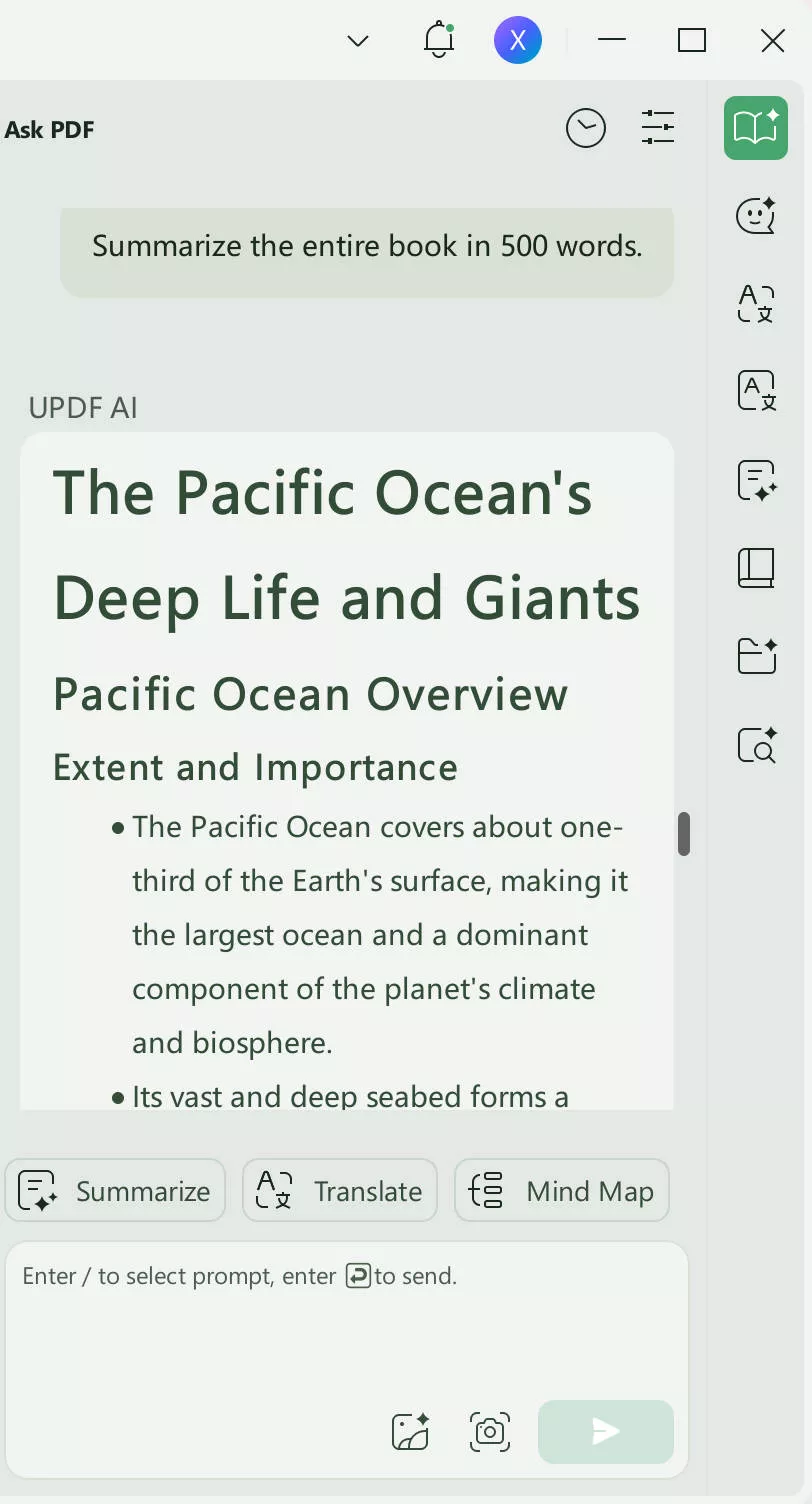
Prompt #2: Summarize and extract five key points from the book.
Prompt #3: Summarize chapter two in bullet points under 300 words.
Recommendations on Medical Books Worth Reading
Prompt #1: I'm a medical student looking to deepen my understanding of human anatomy. Can you recommend three essential anatomy books that are comprehensive and easy to understand? Each recommendation should be no more than 150 words.
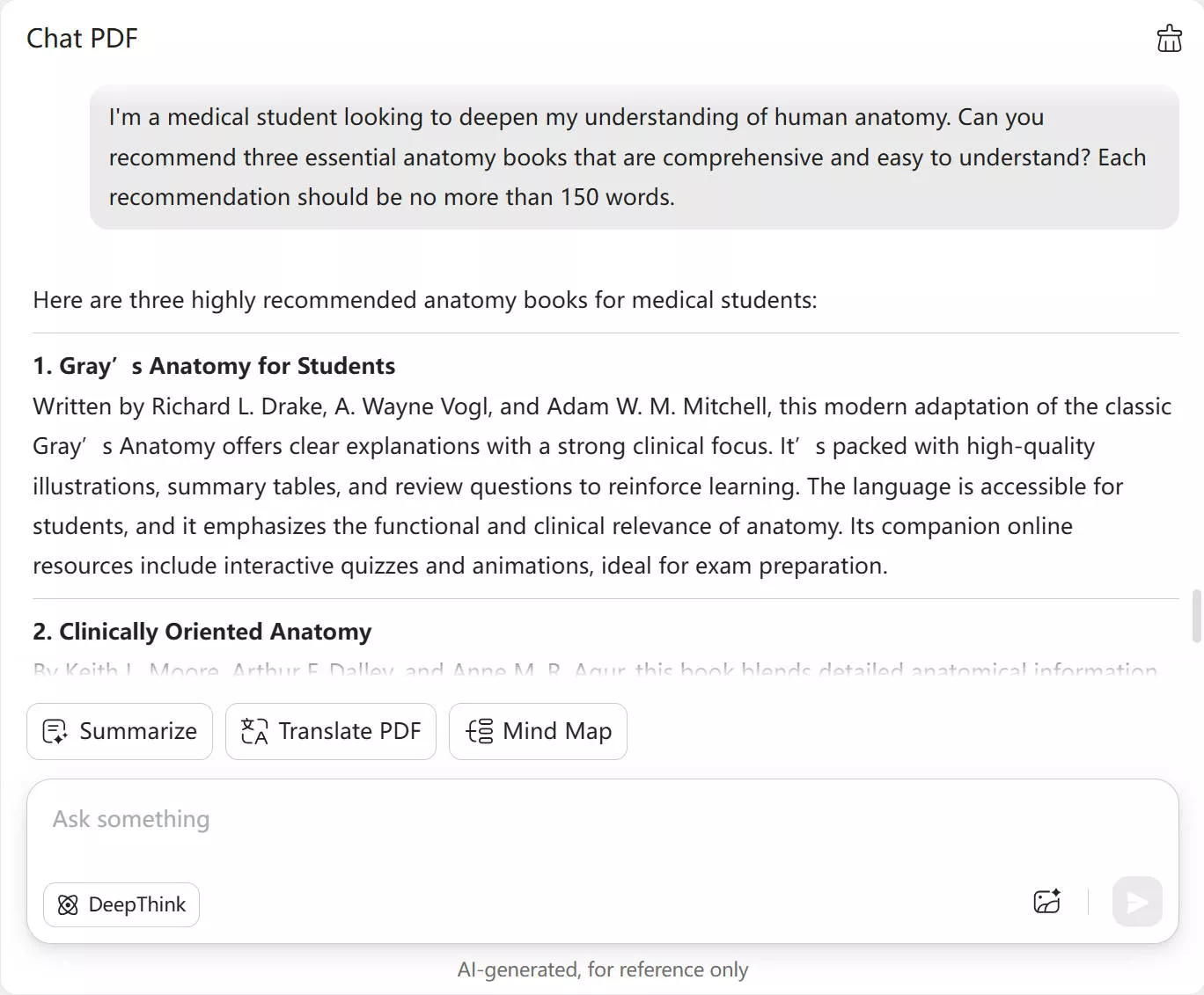
Prompt #2: As a general practitioner, I want to enhance my knowledge of differential diagnosis. Can you suggest two must-read books that provide practical approaches and case studies on differential diagnosis? Please include a brief description of each book.
Prompt #3: As someone new to the field of psychiatry, I'm looking for introductory books that offer a solid foundation in psychiatric concepts and treatments. Can you provide recommendations for three beginner-friendly books on psychiatry, with a short summary of what each book covers?
Prompt #4: I'm a nurse seeking to improve my clinical skills and patient care techniques. Can you suggest a couple of highly-regarded nursing textbooks or guides that are practical and up-to-date? Include a brief overview of the main features and benefits of each book.
Bonus: What Else Can UPDF's AI Feature Do?
Until now, we have looked into how is AI used in healthcare for different scenarios with UPDF's AI assistant. However, the capabilities of the UPDF AI feature are not limited to the above ones.
UPDF AI feature is the ultimate PDF AI assistant and chatbot, which means that you can use it for plenty of other purposes. Here's what else you can do with UPDF's AI assistant:
- Translate any text into almost any language you want.
- Translate scanned PDFs or images using UPDF's OCR technology and AI assistant.
- Get assistance in ideation and brainstorming concepts.
- Get help in writing on almost anything, such as blog posts, emails, marketing content, etc.
- Rewrite existing content to improve wording.
- Proofread and fix grammar errors in your content.
- Summarize and extract key points from documents.
- Get research assistance by finding relevant information.
Besides that, UPDF's AI assistant can also be used for many sectors. You can use it in human resources, e-commerce, education, finance, customer service, and marketing. All you need to do is use the right prompts to get the most out of the UPDF AI feature.
Conclusion
With the dominating AI era, the search for how is AI used in healthcare and how to leverage AI in different medical-related activities is increasing. In this guide, we have walked you through different prompt-based examples of how UPDF's AI assistant can help you analyze reports, answer medical questions, and do much more. So, think no more! It's time for action. Get UPDF and access its AI chatbot to get assistance in healthcare-related activities.
Windows • macOS • iOS • Android 100% secure
 UPDF
UPDF
 UPDF for Windows
UPDF for Windows UPDF for Mac
UPDF for Mac UPDF for iPhone/iPad
UPDF for iPhone/iPad UPDF for Android
UPDF for Android UPDF AI Online
UPDF AI Online UPDF Sign
UPDF Sign Edit PDF
Edit PDF Annotate PDF
Annotate PDF Create PDF
Create PDF PDF Form
PDF Form Edit links
Edit links Convert PDF
Convert PDF OCR
OCR PDF to Word
PDF to Word PDF to Image
PDF to Image PDF to Excel
PDF to Excel Organize PDF
Organize PDF Merge PDF
Merge PDF Split PDF
Split PDF Crop PDF
Crop PDF Rotate PDF
Rotate PDF Protect PDF
Protect PDF Sign PDF
Sign PDF Redact PDF
Redact PDF Sanitize PDF
Sanitize PDF Remove Security
Remove Security Read PDF
Read PDF UPDF Cloud
UPDF Cloud Compress PDF
Compress PDF Print PDF
Print PDF Batch Process
Batch Process About UPDF AI
About UPDF AI UPDF AI Solutions
UPDF AI Solutions AI User Guide
AI User Guide FAQ about UPDF AI
FAQ about UPDF AI Summarize PDF
Summarize PDF Translate PDF
Translate PDF Chat with PDF
Chat with PDF Chat with AI
Chat with AI Chat with image
Chat with image PDF to Mind Map
PDF to Mind Map Explain PDF
Explain PDF Scholar Research
Scholar Research Paper Search
Paper Search AI Proofreader
AI Proofreader AI Writer
AI Writer AI Homework Helper
AI Homework Helper AI Quiz Generator
AI Quiz Generator AI Math Solver
AI Math Solver PDF to Word
PDF to Word PDF to Excel
PDF to Excel PDF to PowerPoint
PDF to PowerPoint User Guide
User Guide UPDF Tricks
UPDF Tricks FAQs
FAQs UPDF Reviews
UPDF Reviews Download Center
Download Center Blog
Blog Newsroom
Newsroom Tech Spec
Tech Spec Updates
Updates UPDF vs. Adobe Acrobat
UPDF vs. Adobe Acrobat UPDF vs. Foxit
UPDF vs. Foxit UPDF vs. PDF Expert
UPDF vs. PDF Expert








 Lizzy Lozano
Lizzy Lozano 
 Enid Brown
Enid Brown 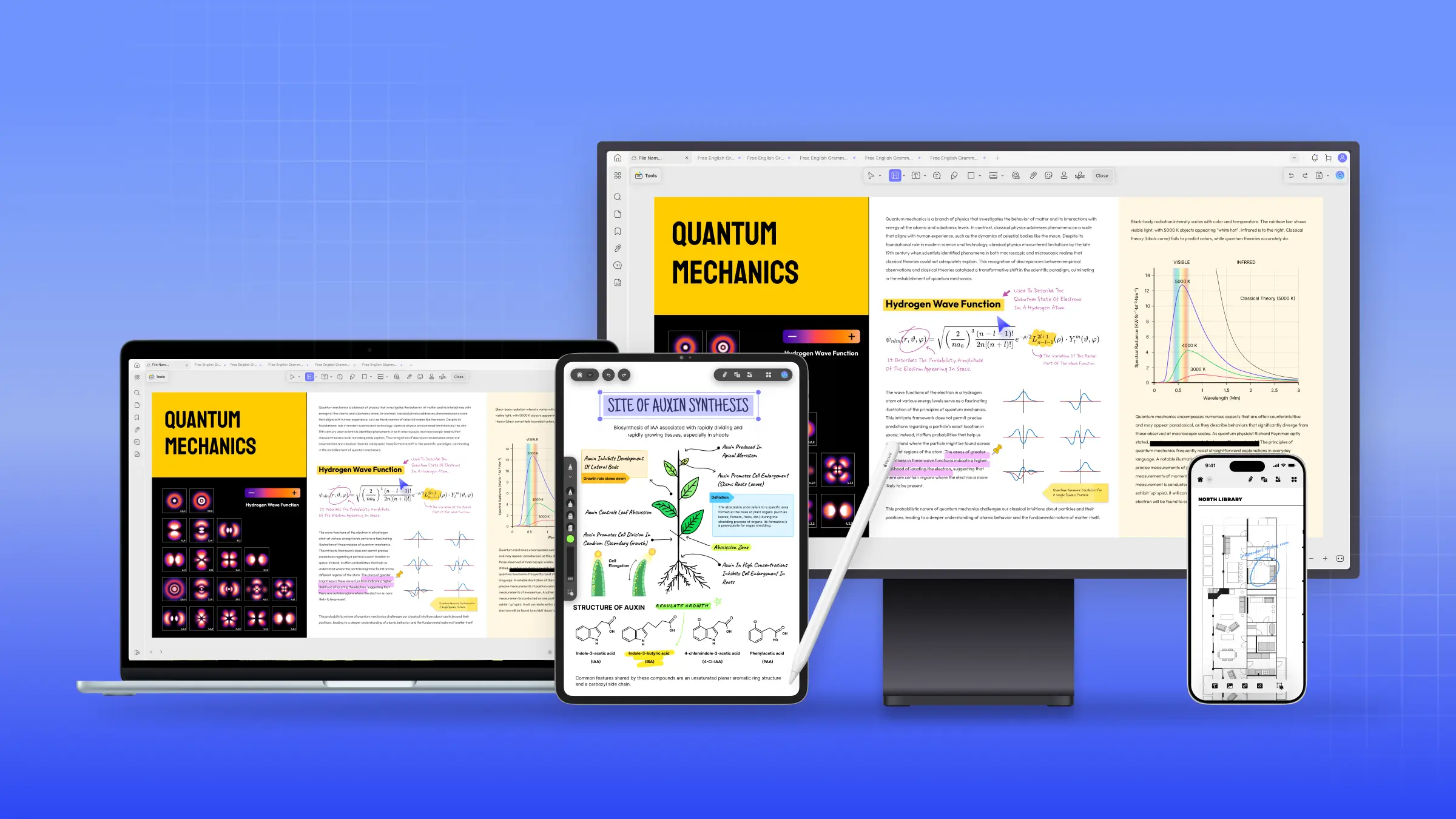
 Engelbert White
Engelbert White 

 Enrica Taylor
Enrica Taylor